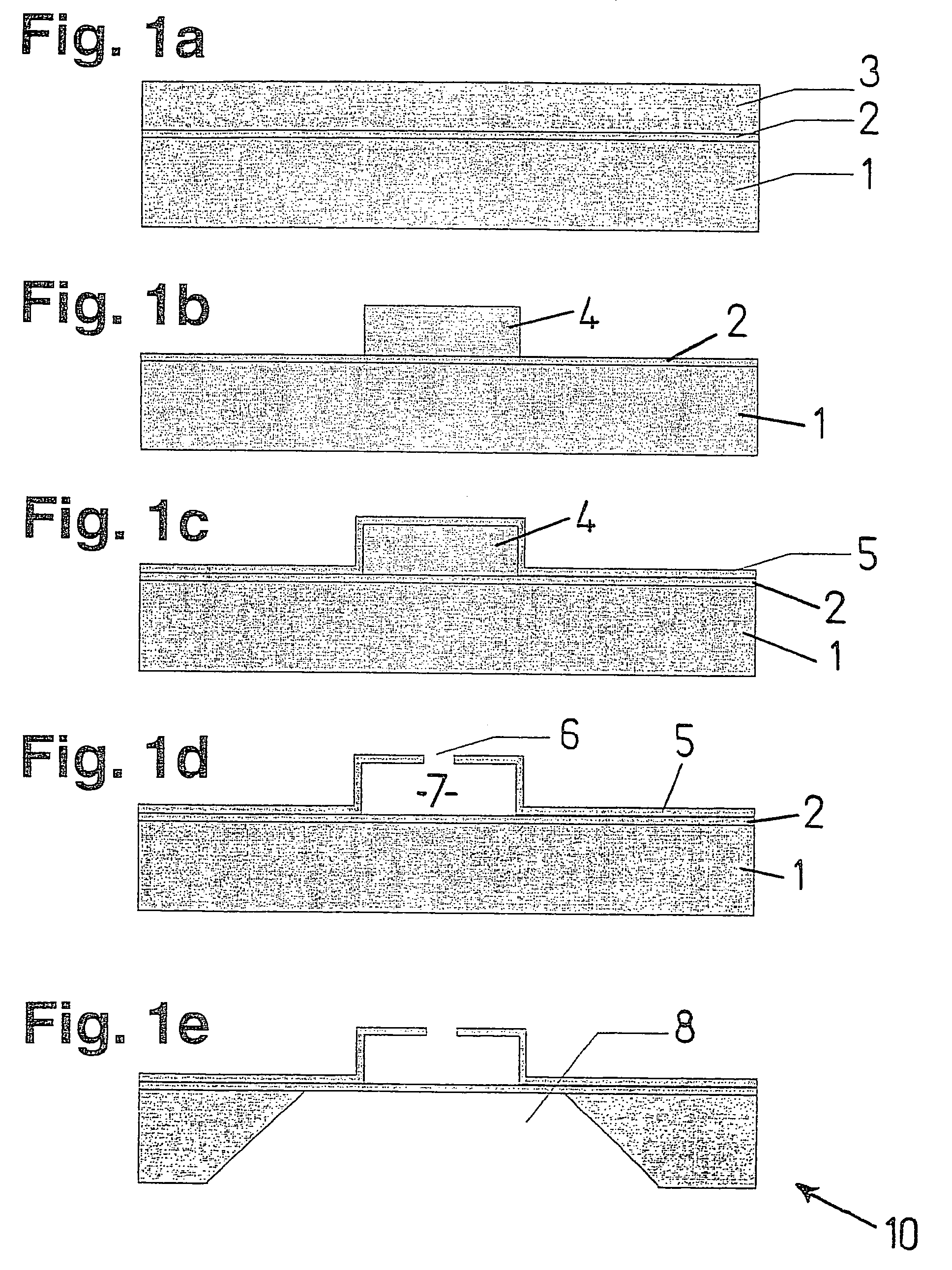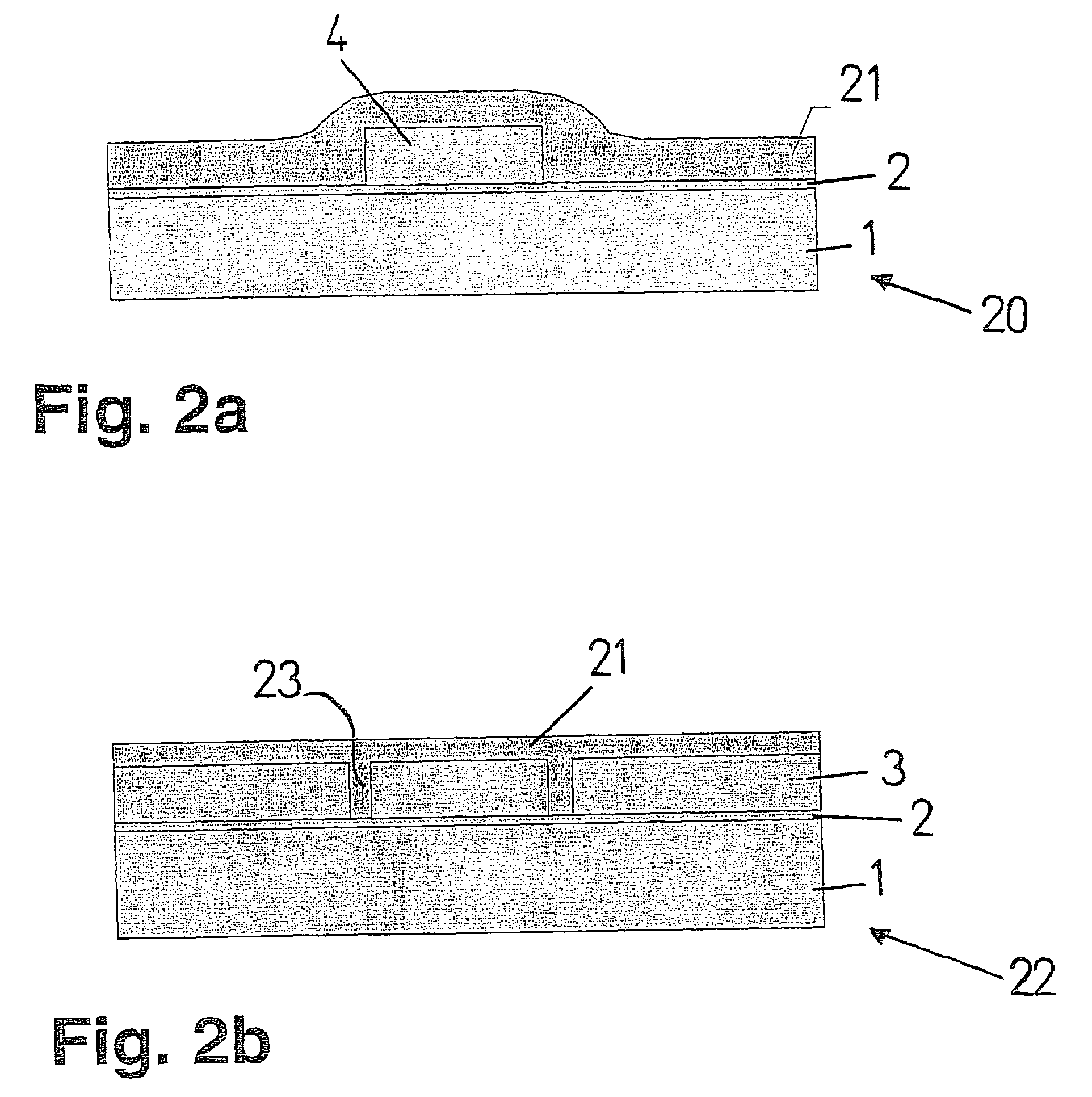Method for producing cavities having optically transparent wall
a technology of optical transparency and production method, which is applied in the manufacture of cables/conductor parts, microstructural devices, liquid/fluent solid measurements, etc., can solve the problems of complex manufacturing method, high cost, and even more cost of method known from standard practice, and achieve high etching selectivity and high etching rate
- Summary
- Abstract
- Description
- Claims
- Application Information
AI Technical Summary
Benefits of technology
Problems solved by technology
Method used
Image
Examples
Embodiment Construction
[0015]As just mentioned, FIGS. 1a through 1e show a component 10 in the individual phases of a variant of the method of the present invention for producing a cavity having an optically transparent wall. Here, component 10 is implemented on a silicon substrate 1. In the exemplary embodiment shown here, however, component 10 may also be implemented on another substrate that is suited for use in Microsystems technology.
[0016]The layer construction shown in FIG. 1a corresponds to that of an SOI wafer, but may also be implemented by starting out from a silicon wafer that forms substrate 1. To this end, a silicon oxide layer 2 is produced on substrate 1. This may be accomplished by oxidation of silicon wafer 1 or also by deposition of silicon oxide onto the surface of silicon wafer 1. The silicon oxide layer is optically transparent. A polycrystalline silicon-epitaxy layer 3 is subsequently deposited onto silicon oxide layer 2.
[0017]At this point, silicon-epitaxy layer 3 is structured in ...
PUM
| Property | Measurement | Unit |
|---|---|---|
| transparent | aaaaa | aaaaa |
| optically transparent | aaaaa | aaaaa |
| electrical insulation | aaaaa | aaaaa |
Abstract
Description
Claims
Application Information
 Login to View More
Login to View More - R&D
- Intellectual Property
- Life Sciences
- Materials
- Tech Scout
- Unparalleled Data Quality
- Higher Quality Content
- 60% Fewer Hallucinations
Browse by: Latest US Patents, China's latest patents, Technical Efficacy Thesaurus, Application Domain, Technology Topic, Popular Technical Reports.
© 2025 PatSnap. All rights reserved.Legal|Privacy policy|Modern Slavery Act Transparency Statement|Sitemap|About US| Contact US: help@patsnap.com



